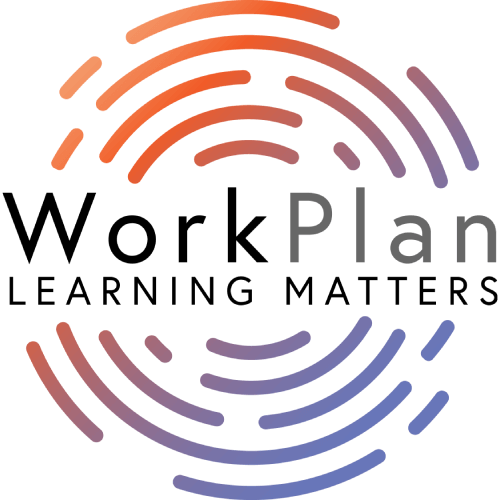In this 4-part series, WorkPlan takes you through the phases of creating an effective e-learning course. This is part 3 of the series where we unwrap how to develop and implement your e-learning course.
Welcome to part 3 of our 4-part series on creating an effective e-learning course. In the last two parts, we discussed how you should approach planning and the considerations you should make when developing your e-learning course.
In this part, we will aim to contextualise all those principles to help you develop and then implement your e-learning course.
Develop
The development phase is where the course materials are authored, reviewed, produced, and validated. This phase is where all the individual principles that we outlined in Part 1 and Part 2 come together. But here we’re going to discuss two important things to keep in mind.
Segmenting the Lessons
As discussed in the second part of this series, microcontent is copy, imagery or videos that can be consumed in 10-30 seconds. The best way to structure microcontent is by segmenting your lessons based on content.
Consider breaking up your course into segments that differentiate between each topic and give your learners some breathing room between every couple of lessons with checkpoints. These checkpoints can be interactive activities like quizzes or a prompt for your learner to practice what they’ve just learned.
Take this example from our second part:
-
- Introduction and Welcome
- Your Role Outline
- Quiz > Checkpoint
- Company Policy > Segmented topics
- Communication
- Our Team
- NDA
- Quiz > Checkpoint
- Conclusion
Spreading the information over a few lessons or courses helps your employees retain the information better than if you were to deliver it all in one go.
Preview from a Learner’s Perspective
Ensure that you view the course from the learner’s perspective multiple times throughout the development process. This will help you understand how your course flows and this fresh perspective can catch any errors that you may have missed when creating the content.
Implement and deliver
Before publishing your e-learning course there are two things you should do before sharing it with your intended audience:
- Check through the course for any errors
- Test your course with a small sample of people (i.e. friends, family, colleagues, a sample of your intended audience)
As discussed before, preview your course once you’ve completed it and go through it as a learner would.
Having a new set of eyes review and test your course is like going through your content with a fine-tooth comb. This fresh perspective can provide insight into what works or what doesn’t make sense so you can polish and optimise your course.
Once you’re confident that your e-learning course is completed without errors, you can confidently share it with your team. But remember, the e-learning course development process isn’t over yet.
This concludes part 3 of our 4-part series covering the creation of an effective e-learning course in WorkPlan Learning’s LMS. In our final instalment, WorkPlan will cover the importance of evaluating your completed course and how you can do this.
How WorkPlan Learning can help
WorkPlan Learning is a collaborative LMS that keeps all your business’s training content in one place, making professional development easily accessible to all your employees. The collaborative capabilities of WorkPlan Learning allow your employees to keep on top of their professional development by giving them room to give feedback and raise any gaps in knowledge.
Contact us to try our free demo.
Related Articles
Are you ready to take your business to another level?
Contact us today
Head Office
1300 726 708
+61 7 3220 2229
Melbourne Office
+61 3 9752 5651
In the spirit of reconciliation WorkPlan acknowledges the Traditional Custodians of country throughout Australia and their connections to land, sea and community. We pay our respect to their Elders past and present and extend that respect to all Aboriginal and Torres Strait Islander peoples.



